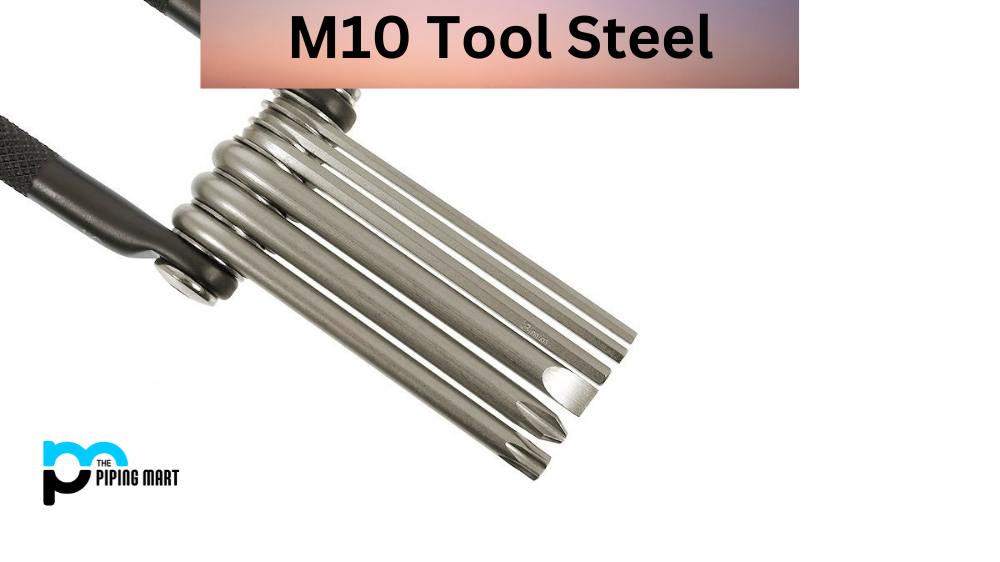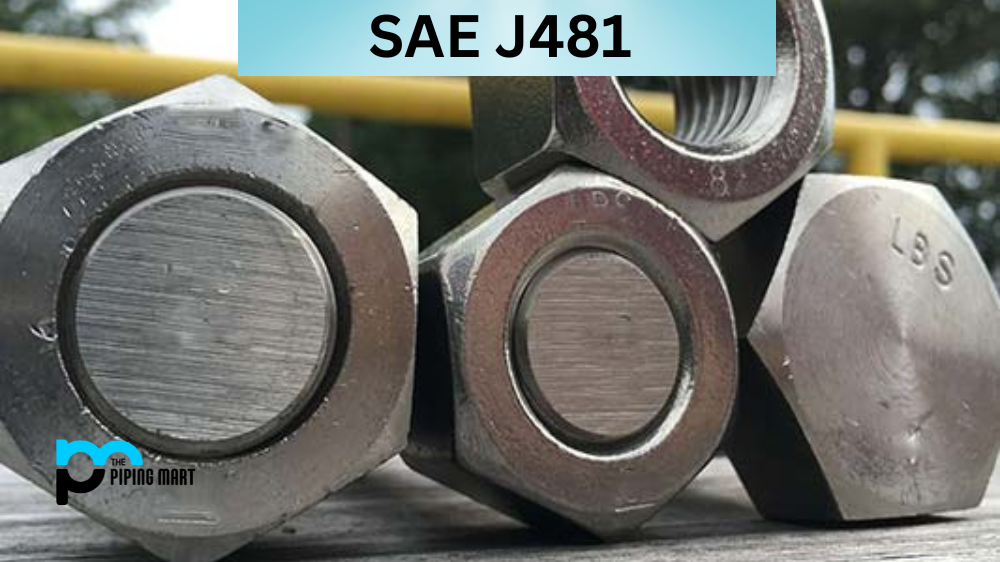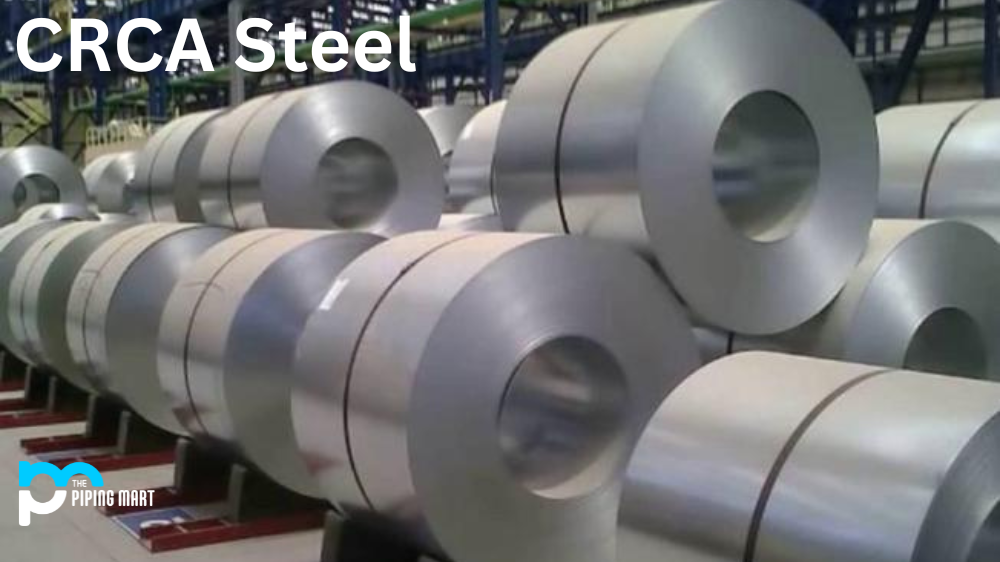Tool steel is a type of alloy steel that is used in the production and manufacture of tools, dies, and machine parts. Tool steel is usually composed of iron, carbon, and other alloying elements such as chromium, tungsten, cobalt, vanadium, manganese, and molybdenum. One type of tool steel that has been gaining popularity lately is Tool Steel M10. This blog post will discuss what Tool Steel M10 is and why it’s becoming so popular. We’ll also talk about its composition, chemical properties, mechanical properties, physical properties, uses, corrosion resistance, heat resistance heat treatment machining, and welding.
Composition
Tool Steel M10 is an air-hardening medium alloy cold work tool steel with a high level of wear resistance. Its main components are Carbon (C) 0.9%, Chromium (Cr) 4%, and Manganese (Mn) 1%. Tungsten (W) 5%, Vanadium (V) 0.2%, Cobalt (Co) 0.5%.
| Component Elements Properties | Metric | English | Comments |
|---|---|---|---|
| Carbon, C | 0.84 – 1.05 % | 0.84 – 1.05 % | |
| Chromium, Cr | 3.75 – 4.5 % | 3.75 – 4.5 % | |
| Copper, Cu | <= 0.25 % | <= 0.25 % | |
| Iron, Fe | 82.3 – 85.6 % | 82.3 – 85.6 % | As Balance |
| Manganese, Mn | 0.10 – 0.40 % | 0.10 – 0.40 % | |
| Molybdenum, Mo | 7.75 – 8.5 % | 7.75 – 8.5 % | |
| Nickel, Ni | <= 0.30 % | <= 0.30 % | |
| Phosphorus, P | <= 0.030 % | <= 0.030 % | |
| Silicon, Si | 0.20 – 0.45 % | 0.20 – 0.45 % | |
| Sulfur, S | <= 0.030 % | <= 0.030 % | 0.06 to 0.15% may be specified to improve machinability |
| Vanadium, V | 1.8 – 2.2 % | 1.8 – 2.2 % |
Chemical Properties
The chemical properties of this type of tool steel are excellent compared to other types of tool steels due to its high levels of chromium which provides superior wear resistance and makes it resistant to corrosion when exposed to different environments or chemicals. It also has a good balance between hardness and toughness, making it ideal for applications that require both qualities simultaneously.
Mechanical Properties
The mechanical properties of steel M10 are excellent due to its high levels of carbon, which allows for great strength while still being relatively easy to shape or machine into desired shapes or sizes with little effort from the user/manufacturer. It has a low distortion rate when heated up during machining processes, reducing waste materials from inaccurately shaped parts or components during production runs.
Physical Properties
physical properties of this type of tool steel are outstanding due to its low density which makes it lightweight yet robust enough to handle heavy loads without compromising its structural integrity or performance capabilities even after long term use in extreme conditions such as high temperatures or pressure environments where other metals would succumb quickly over time due to fatigue or damage caused by regular wear-and-tear usage patterns over extended periods.
| Density (lb / cu. in.) | 0.284 |
|---|---|
| Specific Gravity | 7.85 |
| Melting Point (Deg F) | 2590 |
| Modulus of Elasticity Tension | 28 |
Uses
Tool Steel M10 can be used for various applications requiring durability and abrasion resistance, including industrial machinery parts such as gears and bearings as well as tools used in metalworking processes such as cutting tools drilling bits etc.. It can also be used for manufacturing dies molds punches shearing blades etc.. Additionally this material can also be used for electrical components such as switches connectors etc..
Corrosion Resistance
Tool Steel M10 offers excellent corrosion resistance thanks to its Chromium content which helps create an oxide film on the surface preventing corrosive elements from penetrating further into the metal reducing potential damage done by oxidation over time if left unprotected against these environment elements respectively.
Heat resistance
Tool steel M10 is an alloy composed primarily of iron, carbon, and vanadium. This a great choice for heat resistance in industry and manufacturing applications. Its special properties provide great protection for tools against extreme temperatures, corrosion, and wear. With its hard wearing properties M10 tool steel allows for longer lasting products that require far less maintenance or replacement over the long term due to its superior durability. The combination of conductive properties make it a popular choice amongst engineers when tackling projects where heat resistance is imperative to success. Overall, the incredible heat resistant qualities of M10 steel are undeniable and make it the premier option in many tough applications.
Heat treatment
Heat treatment of tool steel M10 is an important part of metalworking. The metal will not reach its optimum mechanical properties without the proper heat treatment, leaving it vulnerable to environmental elements such as wear and tear. To heat treat tool steel M10 properly, the metal must be heated to a temperature range between 1550–1620°F (843–880°C) before quenching in oil or water. Afterward, tempering can be applied to achieve hardened surfaces while maintaining good toughness and shock resistance. With the right heat treatments, tool steel M10 can be used for applications that require extreme hardness or high wear resistance.
Machining
Machining tool steel M10 can be a daunting task for many engineers. However, with the correct steps and processes, this machining can become much easier. Understanding what speeds to run at as well as select coatings and coolants, allows for smoother cuts on tool steel M10 properties. Using these best practices, a complex process like machining tool steel can become manageable and efficient. Not only will the job get done to perfection but the wear and tear on your tools is also reduced significantly. In conclusion, although machining tool steel may seem intimidating it is possible when following the proper steps.
Welding
Welding tool steel M10 creates a strong material that can withstand high pressures and temperatures. This versatile alloy is used in a variety of industrial applications, from automotive parts to commercial equipment. Understanding the unique properties of this particular grade enables welders to get the best results from their work. Good welding technique is essential when performing M10 welding, as it ensures the final product has a high level of strength and durability. With careful preparation, welders can produce quality welds that surpass expectations for whatever project they embark on.
Conclusion
M10 is a highly versatile steel tool that can be used for various applications. It offers good wear resistance and toughness, and is easily machined. If you are looking for a tool steel that can provide many years of service, M10 should be at the top of your list. Thanks for reading!

Meet Bhavesh, a seasoned blogger with a wealth of knowledge and experience. From metal products manufacturing to retail, Bhavesh has a diverse background in various industries and is dedicated to sharing his insights and expertise with readers.




